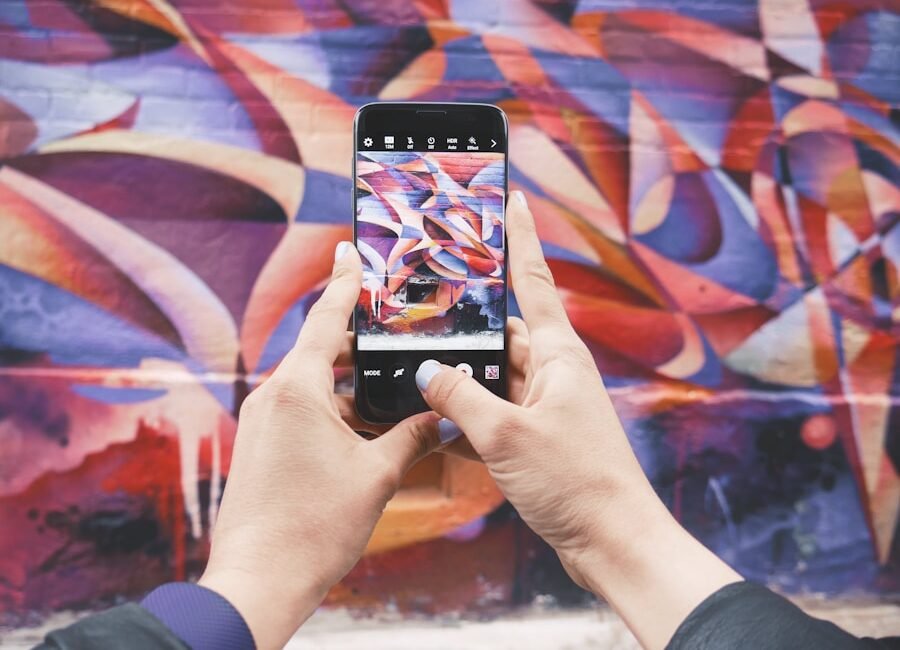Blockchain technology has been making waves in the art world in recent years, revolutionizing the way art is preserved, authenticated, and traded. The rise of blockchain in the art world can be attributed to its ability to provide a secure and transparent platform for digital art preservation and ownership. With the increasing digitization of art, the need for a reliable and secure system for preserving and authenticating digital art has become more pressing than ever. Blockchain technology offers a decentralized and tamper-proof system that can securely store and verify digital art, making it an ideal solution for the art world.
The art world has traditionally been plagued by issues of provenance, authenticity, and ownership, but blockchain technology has the potential to address these challenges. By providing a secure and transparent platform for recording and verifying art transactions, blockchain technology can help to eliminate fraud and ensure the integrity of the art market. As a result, more artists, collectors, and galleries are turning to blockchain technology as a means of preserving and authenticating digital art, leading to its rapid rise in the art world.
Understanding the Role of Blockchain in Digital Art Preservation
Blockchain technology plays a crucial role in digital art preservation by providing a secure and immutable platform for storing and verifying digital art. Unlike traditional methods of art preservation, which are susceptible to tampering and fraud, blockchain technology offers a decentralized and transparent system that can securely record and verify the provenance and authenticity of digital art. By using cryptographic algorithms and distributed ledger technology, blockchain can create a tamper-proof record of digital art transactions, ensuring that the integrity of the art is preserved.
In addition to preserving the integrity of digital art, blockchain technology also provides a means of ensuring the long-term accessibility of digital art. By storing digital art on a decentralized network of computers, blockchain technology can help to prevent the loss or destruction of digital art, ensuring that it remains accessible for future generations. As a result, blockchain technology is playing an increasingly important role in digital art preservation, providing a secure and reliable platform for storing and verifying digital art.
The Advantages of Using Blockchain for Art Authentication and Ownership
One of the key advantages of using blockchain for art authentication and ownership is its ability to provide a secure and transparent platform for recording and verifying art transactions. Unlike traditional methods of art authentication, which are often susceptible to fraud and forgery, blockchain technology offers a decentralized and tamper-proof system that can securely record and verify the provenance and ownership of art. By using cryptographic algorithms and distributed ledger technology, blockchain can create a secure and immutable record of art transactions, ensuring that the authenticity of the art is preserved.
In addition to providing a secure platform for art authentication, blockchain technology also offers a means of ensuring the transparency of art ownership. By recording art transactions on a decentralized ledger, blockchain technology can provide a transparent record of ownership, making it easier for collectors, galleries, and institutions to verify the provenance and ownership of art. As a result, more artists and collectors are turning to blockchain technology as a means of authenticating and verifying the ownership of art, leading to its increasing adoption in the art world.
Exploring the Impact of Blockchain on Art Market Transparency and Security
Blockchain technology has had a significant impact on art market transparency and security by providing a secure and transparent platform for recording and verifying art transactions. Unlike traditional methods of art trading, which are often plagued by issues of fraud and forgery, blockchain technology offers a decentralized and tamper-proof system that can securely record and verify the provenance and ownership of art. By using cryptographic algorithms and distributed ledger technology, blockchain can create a secure and immutable record of art transactions, ensuring that the integrity of the art market is preserved.
In addition to providing a secure platform for recording art transactions, blockchain technology also offers a means of ensuring the transparency of the art market. By recording art transactions on a decentralized ledger, blockchain technology can provide a transparent record of ownership, making it easier for collectors, galleries, and institutions to verify the provenance and ownership of art. As a result, more artists, collectors, and galleries are turning to blockchain technology as a means of trading and authenticating art, leading to its increasing impact on the transparency and security of the art market.
Challenges and Limitations of Blockchain in Digital Art Preservation
While blockchain technology offers many advantages for digital art preservation, it also presents several challenges and limitations that need to be addressed. One of the key challenges of using blockchain for digital art preservation is the issue of scalability. As the size of digital art files continues to grow, storing large amounts of digital art on a blockchain network can become increasingly difficult and costly. In addition, the processing power required to verify large numbers of digital art transactions can also present challenges for blockchain networks.
Another challenge of using blockchain for digital art preservation is the issue of interoperability. As there are currently multiple blockchain platforms in use, ensuring that digital art stored on one platform can be accessed and verified on another platform can be challenging. This lack of interoperability can make it difficult for artists, collectors, and galleries to securely store and verify digital art across different blockchain networks.
Case Studies: Successful Implementation of Blockchain in Art Preservation
Despite the challenges and limitations of using blockchain for digital art preservation, there have been several successful case studies that demonstrate its potential in the art world. One notable example is the implementation of blockchain technology by Maecenas, a blockchain-based platform that allows investors to buy shares in fine art using cryptocurrency. By using blockchain technology to securely record and verify art transactions, Maecenas has been able to provide investors with a transparent and secure platform for trading shares in fine art.
Another successful case study is the implementation of blockchain technology by Verisart, a platform that uses blockchain to provide certificates of authenticity for digital art. By using blockchain technology to create tamper-proof records of digital art transactions, Verisart has been able to provide artists with a secure means of authenticating their work, leading to increased trust and confidence in the digital art market.
The Future of Blockchain in Revolutionizing Digital Art Preservation
Looking ahead, it is clear that blockchain technology will continue to play an increasingly important role in revolutionizing digital art preservation. As the digitization of art continues to grow, the need for a secure and reliable platform for preserving and authenticating digital art will become more pressing than ever. Blockchain technology offers a decentralized and tamper-proof system that can securely store and verify digital art, making it an ideal solution for the future of digital art preservation.
In addition to its role in preserving digital art, blockchain technology also has the potential to revolutionize the way that digital art is traded and collected. By providing a secure and transparent platform for recording and verifying art transactions, blockchain technology can help to eliminate fraud and ensure the integrity of the digital art market. As a result, more artists, collectors, and galleries are likely to turn to blockchain technology as a means of trading and authenticating digital art in the future.
In conclusion, it is clear that blockchain technology has had a significant impact on the way that digital art is preserved, authenticated, and traded in recent years. By providing a secure and transparent platform for recording and verifying digital art transactions, blockchain technology has revolutionized the way that digital art is preserved and traded. While there are challenges and limitations associated with using blockchain for digital art preservation, there have been several successful case studies that demonstrate its potential in the art world. Looking ahead, it is likely that blockchain technology will continue to play an increasingly important role in revolutionizing digital art preservation in the future.








